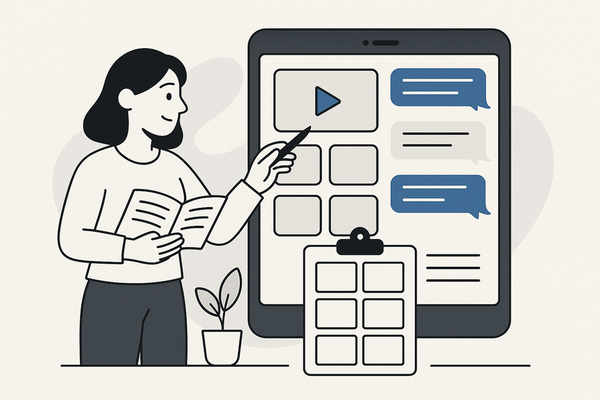Unlocking Creativity with Chat Story Script Templates
Explore chat story script templates to craft dynamic, mobile-friendly narratives with ease. Learn how these templates simplify storytelling and boost reader engagement.

Estimated reading time: 8 minutes
Key Takeaways
- Structure Simplified: Chat story script templates serve as blueprints to streamline dialogue-driven narratives.
- Component Essentials: Key elements include dialogue exchanges, timing cues, character tags, and action brackets.
- Enhanced Engagement: Fast-paced, mobile-first message format boosts immersion and completion rates.
- Efficient Workflow: Reusable templates save time, ensure consistency, and support collaborative writing.
Table of Contents
- Understanding Chat Story Script Templates
- Components of a Chat Story Script Template
- Benefits of Using Chat Story Script Templates
- How to Create and Use Your Own Chat Story Script Templates
- Best Practices and Tips
- Conclusion & Call-to-Action
Understanding Chat Story Script Templates
Chat story script templates are structured frameworks that outline how a chat-based narrative unfolds. They act as blueprints, guiding dialogue progression, character cues, and pacing, so you can focus on story and character rather than formatting.
Narrative Structure and Conversation Flow
- Alternate dialogue between character tags for a realistic exchange.
- Include sender names at each message start.
- Add optional timestamps or “[typing…]” cues to heighten realism.
- Group messages to reveal story beats in concise bursts.
Popular Use Cases and Genres
- Mystery & Horror: Build suspense with delayed replies and ominous hints.
- Romance & Slice-of-Life: Convey emotional beats through intimate chats.
- Customer Support Simulations: Train agents with realistic Q&A flows.
- Educational Scenarios: Teach topics via interactive dialogue.
Components of a Chat Story Script Template
Every chat story template comprises five essential ingredients:
- Dialogue Exchange
- Label each line with tags (e.g., “Alex:”, “Jess:”) to ensure clarity.
- Timing & Pauses
- Use “[typing…]” or “[pause]” to simulate realistic delays.
- Narrative Flow
- Space out reveals to build tension and keep readers scrolling.
- Best practice: short, snappy messages to maintain pace. HappyFox
- Character Tags/Handles
- Maintain consistent speaker labels to avoid confusion.
- Actions or Reactions
- Bracket cues like “[laughs]” or “[eyes widen]” to convey emotion.
Formatting Best Practices
- Keep each line under 100 characters for mobile readability.
- Denote actions and emotions in brackets.
- Use a monospaced font or consistent spacing in your script editor.
Annotated Example:
Jess: Did you hear that noise? └─ Dialogue Exchange example Alex: [typing…] Yeah, I heard something too. └─ Timing & Pause indicated Jess: Should we check it out? Alex: [nervous] Maybe we should call someone first? └─ Action cue and emotion tag
Benefits of Using Chat Story Script Templates
By adopting these templates, writers can:
- Simplify Creative Process: Jumpstart writing with a proven structure, focusing on twists and character arcs.
- Ensure Efficiency & Consistency: Maintain tone and pacing across episodes.
- Boost Reader Engagement: Immediate, personal format drives immersion and completion.
How to Create and Use Your Own Chat Story Script Templates
Follow these steps to build a reusable template:
- Identify Purpose & Genre: Define your story goals to guide tone and pacing.
- Draft a Skeleton Template:
[Character A]: [first message] [Character B]: [response] [Character A]: [reaction]/[action] [Character B]: [delayed reply]
- Set Dialogue Conventions: Choose speaker labels and bracketed actions.
- Test Flow: Run a 5–6 message mock conversation to identify stalls.
- Refine Formatting: Shorten long lines and check mobile preview.
- Save as Reusable Template: Store in a shared doc or script tool for easy access.
Best Practices and Tips
- Do’s:
- Write authentic, concise dialogue that mirrors real speech. Chat Story Script Writing Tips
- Use action brackets purposefully to convey emotion.
- Iterate templates based on reader feedback and engagement metrics.
- Don’ts:
- Don’t cram too much exposition into one message.
- Avoid inconsistent labeling, which can confuse readers.
Conclusion & Call-to-Action
Chat story script templates streamline the creation of interactive, dialogue-driven narratives. By mastering dialogue exchanges, timing cues, narrative flow, character tags, and action brackets, you can deliver fast-paced, mobile-friendly stories with flair. Ready to start? Download our sample template and share your feedback below.
For a library of editable chat story frameworks, see library of editable chat story frameworks.
FAQ
- What is a chat story script template? A blueprint that outlines dialogue exchanges, timing cues, character tags, and action brackets for chat-based narratives.
- How long should each message be? Keep lines under 100 characters to ensure readability on mobile devices.
- Can I use these templates for video creation? Yes, you can turn scripts into text message videos with tools like Vidulk - Fake Text Message Story App.
- Where can I find more templates? Explore our editable chat story frameworks for ready-to-use examples.





